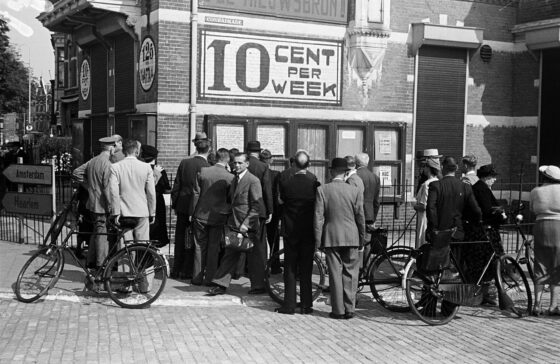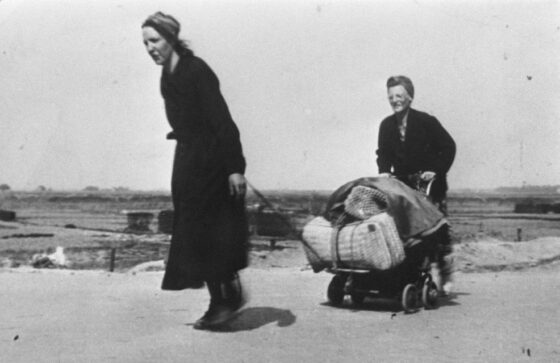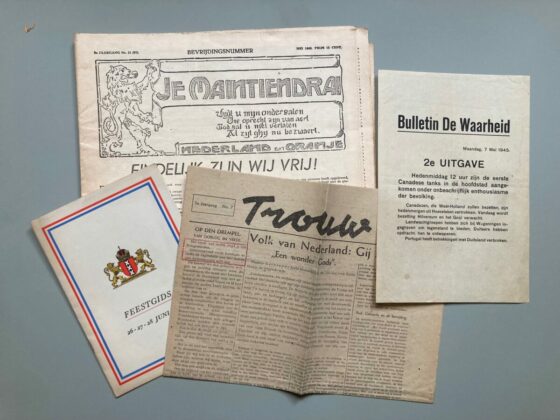Inburgering with Dutch News: World War II in the Netherlands

This May 4 and 5, the Netherlands marks 80 years since the end of World War II. To mark the occasion, here is a special inburgering lesson focusing on the main events of the war as experienced by the Dutch.
Lesson 56: World War II
Invasion: May 10, 1940
The fighting phase of the war in the Netherlands was a short one. Some 300,000 men has been mobilised on August 28, 1939 and the long-awaited invasion took place on May 10, 1940. On May 14 the devastating bombardment of Rotterdam put paid to any further resistance and the Dutch capitulated on May 15.
Razzias: February 22, 1941
The first German raid on the Dutch population took place on February 22, 1941, in Amsterdam. Some 425 Jewish men were rounded up in the Jewish quarter and transported to concentration camps Buchenwald and Mauthausen. Just two of the men survived.
The event prompted the February strike when tens of thousands of Amsterdammers downed tools for three days. Nine people died and 254 were seriously wounded in the strike action, and the first three communist strikers were executed on the Waalsdorpervlakte on March 13. Almost 300 members of the resistance were to follow.

1944 saw the biggest raid in the Netherlands when 52,000 Rotterdam men between the ages of 17 and 40 were taken from their homes, ostensibly to prop up the German war effort but in reality because the Germans feared they would join the resistance. In total, half a million Dutch men and women were forced to work in Germany.
Anne: July 5, 1942
On July 5, 1942, Anne, her sister Margot and the rest of the Frank family went into hiding at the Achterhuis on Prinsengracht, where the younger of the two sisters would write her famous diary. On August 4, 1944, the family were discovered. Theories abound about the possible betrayal of the Franks, but none have been proved conclusively. Anne died in Bergen-Belsen in 1945.
Resistance: April 30, 1943
On April 30, 1943, armed resistance groups, mostly made up of Communists, united to form the Raad van Verzet (resistance council), making more coordinated action possible.
One of its leaders, Gerrit van der Veen, organised an “identity card bureau” where people could order fake IDs, and carried out armed raids on registry offices to destroy addresses and other data. In 1944, Van der Veen was shot while trying to free colleagues from an Amsterdam jail. He got away but was arrested later and executed in the dunes at Overveen.

In 1944, the three main resistance groups formed the Binnenlandse Strijdkrachten (nationla armed forces) headed by princess Juliana’s husband Bernhard who was later found to have been a member of the Nazi party NSDAP. Together, they sabotaged German army transports and supported the final Allied push to free the country.
Operation Market Garden and the Hunger Winter: 1944
Operation Market Garden, the large-scale airborne Allied attempt to put a decisive end to the war, took place on September 17, 1944, but failed because the furthest bridge at Arnhem could not be reached before German forces overwhelmed the British defenders. Allied intelligence had failed to detect the presence of German tanks, including elements of two SS Panzer divisions.
It meant the west of the country faced the worst winter of the war, with supply lines for food and fuel completely cut off by the Germans. They had put up blockades at the Afsluitdijk, one the bridges over the IJssel and at ports as a reprisal for the rail strike which had begun on the orders of the Dutch government in London on September 17, 1944.

The occupied big cities of the Randstad suffered most, with people being reduced to eating their pets and tulip bulbs. Many went on so-called hongertochten, forays into the countryside to barter goods for food. The frozen ground made it difficult to dig graves and in Amsterdam, bodies were stored in the Zuiderkerk. At least 20,000 people died with the end of the war in sight.
Liberation: May 5, 1945
On May 5, the German troops capitulated to the Allies at Hotel De Wereld in Wageningen. The Netherlands was officially liberated, but pockets of armed Germans were still hiding in buildings in Amsterdam. Revellers celebrating on Dam Square were shot at from the roof of the Industrieele Groote Club, resulting in 17 deaths and 117 wounded.

The return from the camps
Only 35,000 of the country’s Jewish population of 140,000 survived the war and 102,000 of the 107,000 who were deported to death camps were killed.
Those who returned found their houses and possession had been taken, and many were presented with bills for unpaid taxes and ground rent for their homes, scandals which are still being dealt with.
Among the worst wartime offenders were Dutch railway company NS and the Amsterdam public transport company GVB, both of which were instrumental in transporting Jews to the camps for money.

In 2005, Dutch railway company NS apologised for its role in Nazi death camp transports and in 2019 paid out millions of euros in compensation to Holocaust survivors or next of kin.
The last tram trip was never paid, and the GVB went as far as to employ a debt collection agency to reclaim the money two years after the end of the war. On board the tram were Anne Frank and her family.
Thank you for donating to DutchNews.nl.
We could not provide the Dutch News service, and keep it free of charge, without the generous support of our readers. Your donations allow us to report on issues you tell us matter, and provide you with a summary of the most important Dutch news each day.
Make a donation